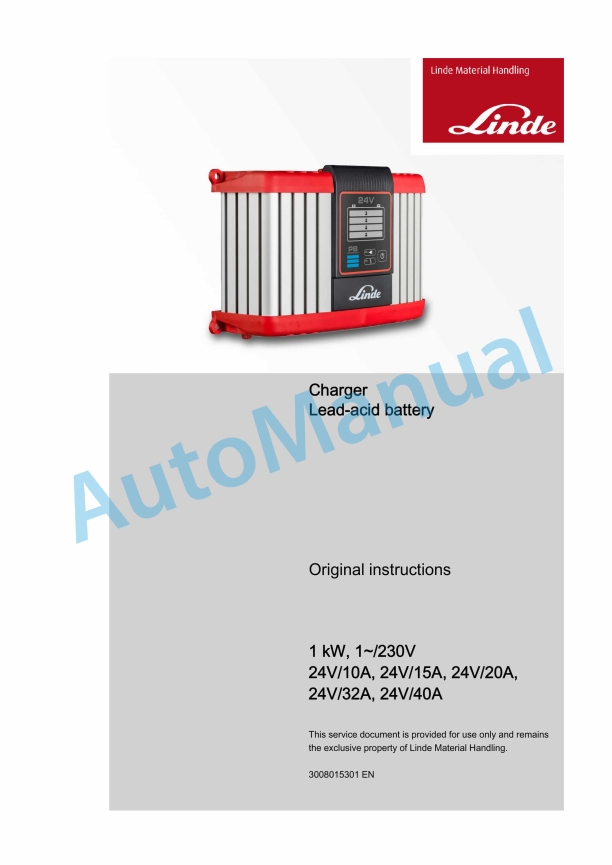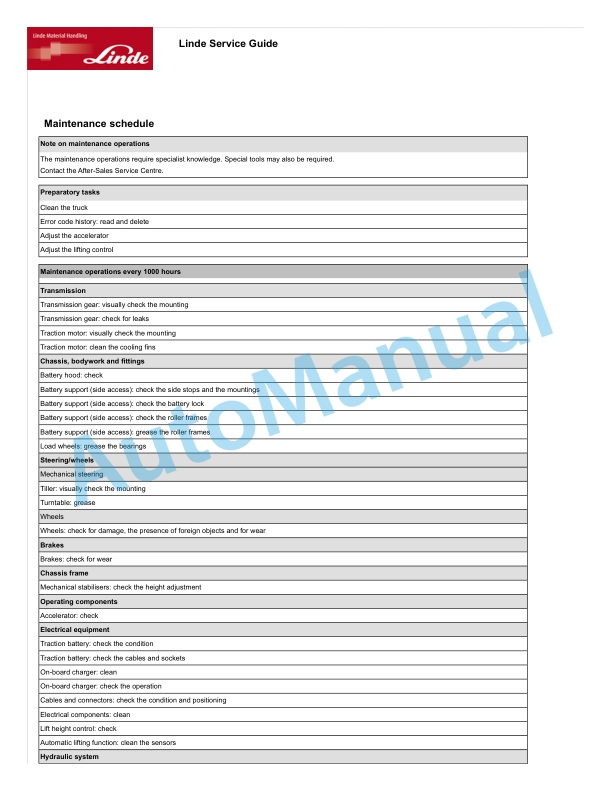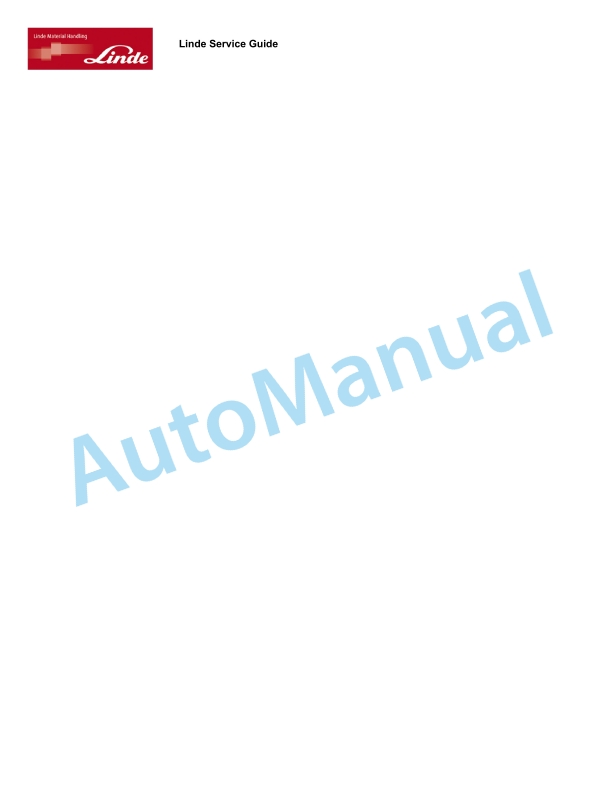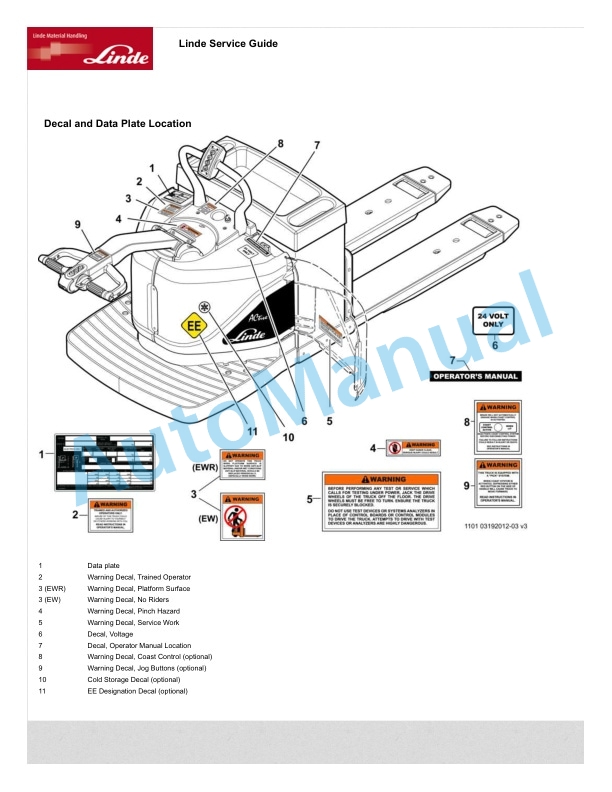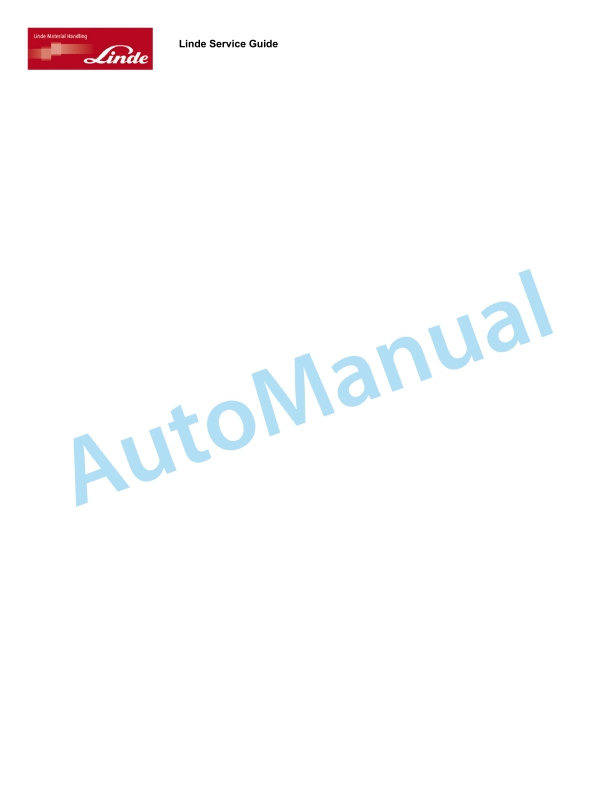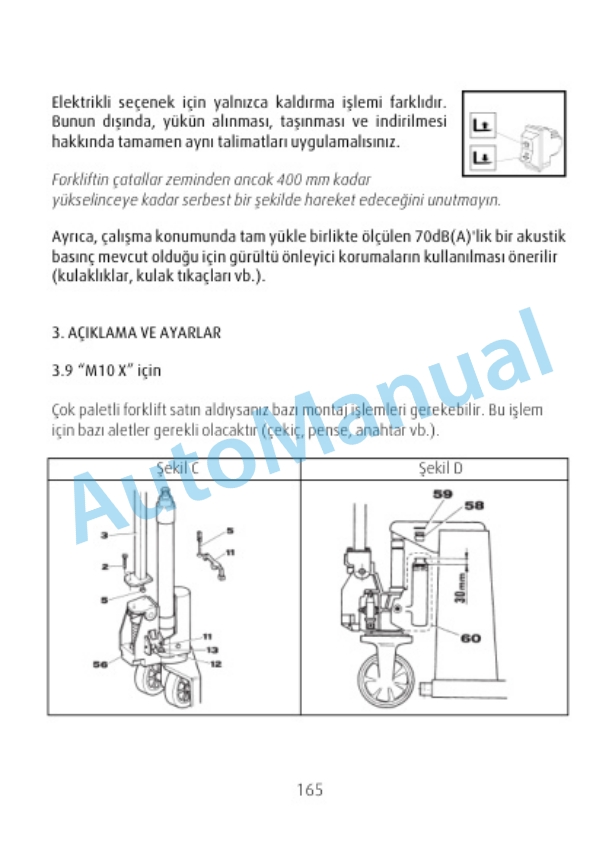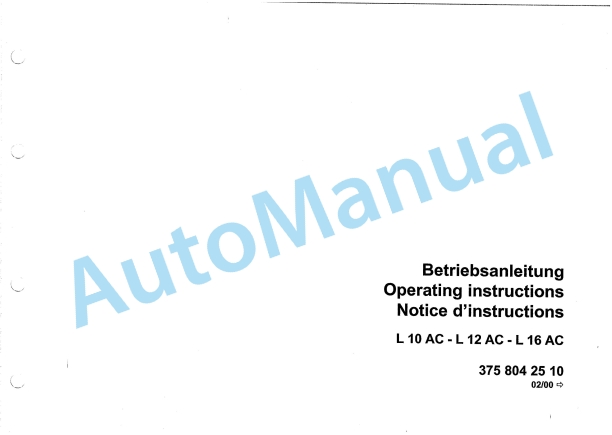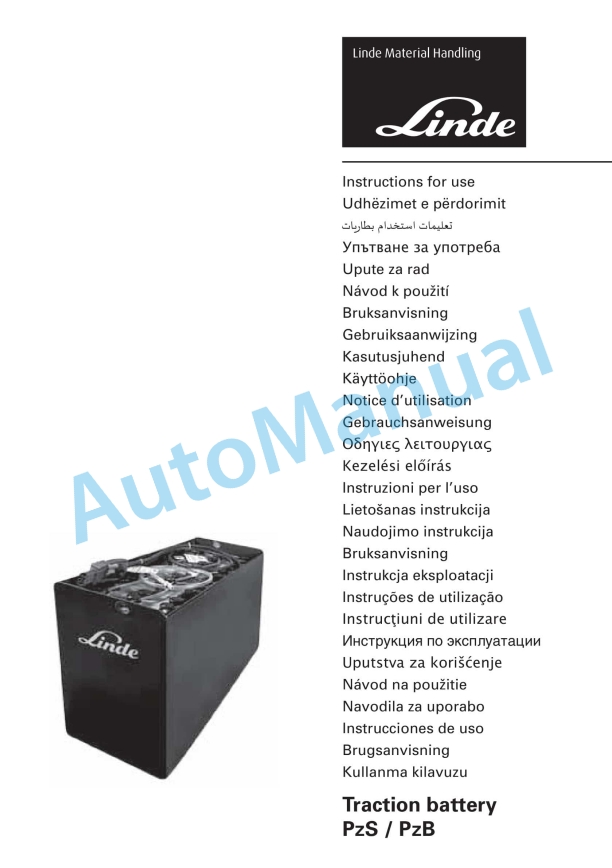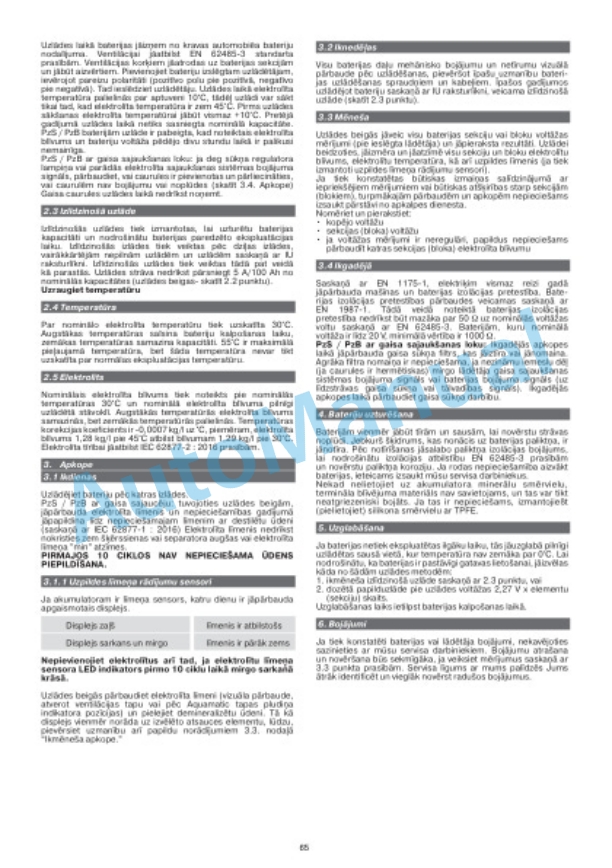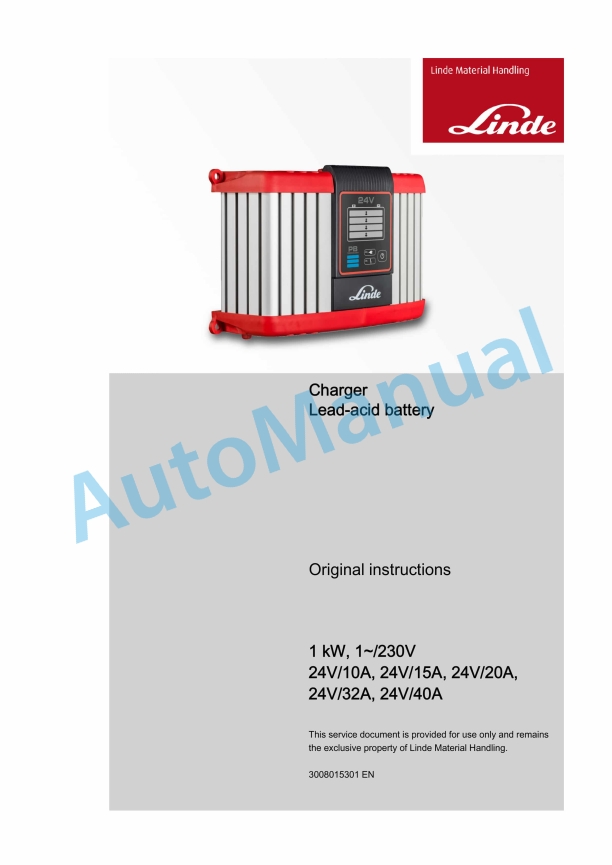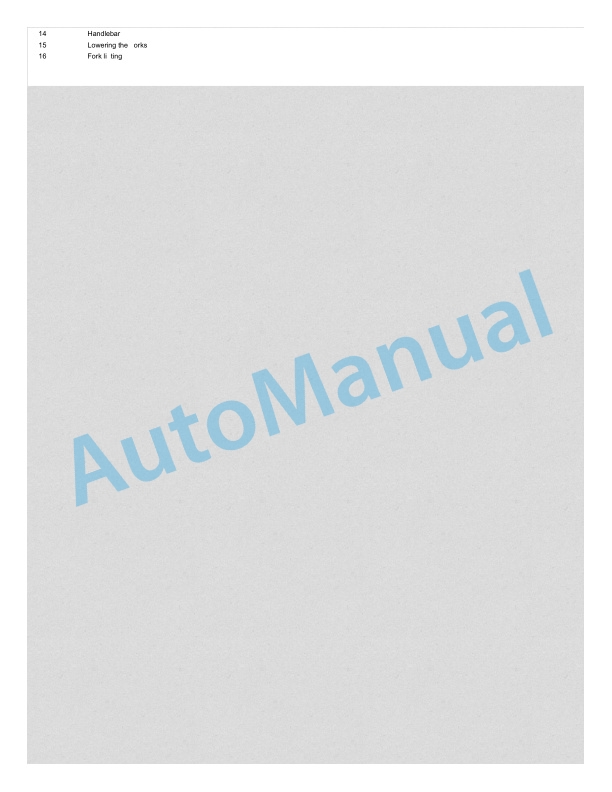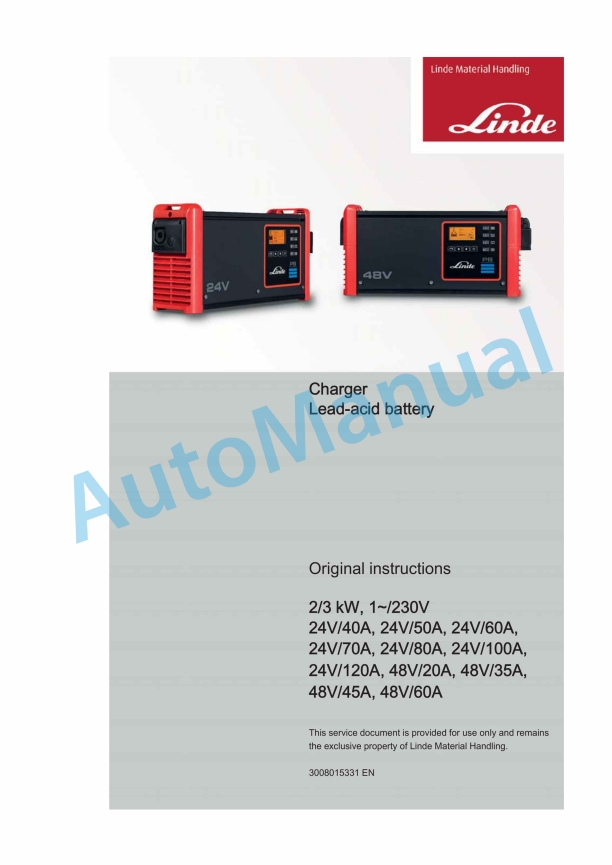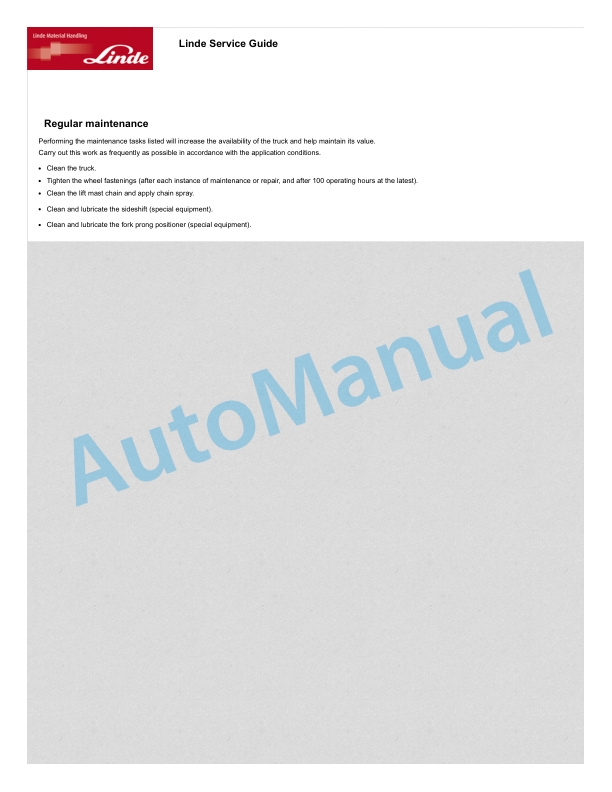Linde 1152-01 – T16L EX Operating Instructions
$20.00
- Type Of Manual: Operating Instructions
- Format: PDF
- Size: 31.8MB
- Number of Pages: 290
Category: Linde Operator Manual PDF
-
Model List:
- T16L EX
- 1. Leadacid battery charger 24V
- 2. Leadacid battery charger 24V . 48V
- 3. Leadacid battery charger 24V . 48V . 80V
- 4. Pallet truckT16 L Ex
- 4.1. Table of content
- 4.2. Introduction
- 4.2.1. Your industrial truck
- 4.2.2. Intended use
- 4.2.3. Impermissible use
- 4.2.4. Basic information on explosion protection
- 4.2.5. Description of use and climatic conditions
- 4.2.6. Symbols used
- 4.2.7. Technical description
- 4.2.8. Drive
- 4.2.9. Steering
- 4.2.10. Hydraulic system
- 4.2.11. Operation
- 4.2.12. Braking system
- 4.2.13. Load lift system
- 4.2.14. Chassis frame
- 4.2.15. Electrical system
- 4.2.16. Temperature monitoring
- 4.2.17. Receiving the industrial truck
- 4.2.18. Legal requirements for placing on the market
- 4.3. Safety
- 4.3.1. Safety regulations
- 4.3.2. Residual risks
- 4.3.3. Stability
- 4.3.4. Handling consumables
- 4.3.5. Qualified person
- 4.3.6. Periodic safety inspection
- 4.4. Overview
- 4.4.1. Adhesive labels
- 4.4.2. Nameplate
- 4.4.3. Truck overview
- 4.4.4. Engine compartment
- 4.4.5. Operating devices
- 4.4.6. Charging indicator
- 4.4.7. Digicode option (LFM Go)
- 4.4.8. LFM AccessLFM Basic option
- 4.5. Operation
- 4.5.1. Service plan before initial commissioning
- 4.5.2. Preshift checks
- 4.5.3. Regular maintenance
- 4.5.4. Instructions for runningin
- 4.5.5. Switching the industrial truck on and off
- 4.5.6. Driving
- 4.5.7. Forwards travel
- 4.5.8. Reverse travel
- 4.5.9. Changing the drive direction
- 4.5.10. Creep speed
- 4.5.11. Steering
- 4.5.12. Impact button
- 4.5.13. Brake system
- 4.5.14. Horn
- 4.5.15. Emergency off switch
- 4.5.16. Working with a load
- 4.5.16.1. Controls for lifting and lowering
- 4.5.16.2. Picking up loads stored at height
- 4.5.16.3. Picking up a load from the ground
- 4.5.16.4. Driving with load
- 4.5.16.5. Capacity
- 4.5.16.6. Using the industrial truck on a gradient
- 4.5.17. Loading.transporting
- 4.5.17.1. Lifting and towing the truck
- 4.5.17.2. Transport
- 4.5.18. Leaving the industrial truck
- 4.5.18.1. Parking the industrial truck securely
- 4.6. Service work
- 4.6.1. General information
- 4.6.2. Inspection and maintenance data
- 4.6.3. Recommendations for consumables
- 4.6.4. Inspection and maintenance overview
- 4.6.4.1. Maintenance schedule
- 4.6.4.2. Additional service plan for explosion protection
- 4.6.5. Preparatory tasks
- 4.6.5.1. Cleaning the industrial truck
- 4.6.5.2. Reading out the error memory
- 4.6.6. Gearbox
- 4.6.6.1. Wheel gear
- 4.6.7. Chassis, bodywork and fittings
- 4.6.7.1. Checking and lubricating the bearing points and joints
- 4.6.7.2. Other cleaning and greasing
- 4.6.8. Chassis frame
- 4.6.8.1. Tightening the wheel fastenings
- 4.6.8.2. Checking the wheels for wear and damage
- 4.6.8.3. Adjusting the support rollers
- 4.6.8.4. Checking the brake system
- 4.6.9. Operating devices
- 4.6.9.1. Checking the horn for correct function
- 4.6.10. Electrical enclosure
- 4.6.10.1. Checking the battery charge status
- 4.6.10.2. Charging the battery
- 4.6.10.3. Replacing the battery
- 4.6.10.4. Checking the condition and secure attachment of the electric cables, cable connectors, cable connections andexplosionproof screw joints
- 4.6.11. Hydraulics
- 4.6.11.1. Servicing the hydraulic system
- 4.6.12. Load lift system
- 4.6.12.1. Checking the antispark protection on the fork arms for wear
- 4.6.13. Troubleshooting
- 4.6.13.1. Checking the Proplan safety unit (PSU)
- 4.6.13.2. Fuse
- 4.6.13.3. Diagnostic connector
- 4.6.13.4. Shutting down
- 4.6.13.5. Disposal of old trucks
- 4.6.13.6. Malfunctions during operation
- 4.7. Technical data
- 4.7.1. Type sheet T16 EX L
- 4.7.2. Noise emission values
- 5. Pallet truckT16 L Ex2G
- 5.1. Table of content
- 5.2. Introduction
- 5.2.1. Your industrial truck
- 5.2.2. CE labelling
- 5.2.3. Legal requirements for marketing
- 5.2.4. Intended use
- 5.2.5. Impermissible use
- 5.2.6. Symbols used
- 5.2.7. Basic information on explosion protection
- 5.2.8. Receiving the industrial truck
- 5.2.9. Disposing of components and batteries
- 5.3. Safety
- 5.3.1. Explosion protection safety guidelines
- 5.3.2. Protective equipment for explosion protection
- 5.3.3. Handling consumables
- 5.3.4. Residual risks
- 5.3.5. Stability
- 5.3.6. Competent person
- 5.3.7. Regular testing
- 5.4. Overview
- 5.4.1. Identification plates.adhesive labels
- 5.4.2. Truck overview
- 5.4.3. Display elements
- 5.4.4. Operating devices
- 5.4.5. Battery charge indicator
- 5.5. Operation
- 5.5.1. Technical description
- 5.5.1.1. Technical description
- 5.5.1.2. Drive
- 5.5.1.3. Steering
- 5.5.1.4. Hydraulic system
- 5.5.1.5. Operation
- 5.5.1.6. Brake system
- 5.5.1.7. Load lift system
- 5.5.1.8. Chassis frame
- 5.5.1.9. Electrical system
- 5.5.1.10. Insulation monitoring
- 5.5.1.11. Temperature monitoring
- 5.5.2. Service plan before initial commissioning
- 5.5.3. Instructions for runningin
- 5.5.4. Preshift checks
- 5.5.4.1. Overview
- 5.5.5. Regular maintenance
- 5.5.6. Switching the warehouse truck on and off
- 5.5.7. Driving
- 5.5.8. Forwards travel
- 5.5.9. Reverse travel
- 5.5.10. Changing the drive direction
- 5.5.11. Steering
- 5.5.12. Impact button
- 5.5.13. Brake system
- 5.5.14. Horn
- 5.5.15. Emergency off switch
- 5.5.16. Working with a load
- 5.5.16.1. Controls for lifting and lowering
- 5.5.16.2. Picking up loads stored at height
- 5.5.16.3. Picking up a load from the ground
- 5.5.16.4. Driving with load
- 5.5.16.5. Capacity
- 5.5.16.6. Using the industrial truck on a gradient
- 5.5.17. Leaving the truck
- 5.5.17.1. Parking the industrial truck securely
- 5.5.18. Loading.transporting
- 5.5.18.1. Slinging the truck
- 5.5.19. Lifting the truck
- 5.6. Service and maintenance
- 5.6.1. Safety information regarding servicing work
- 5.6.2. Inspection and maintenance data
- 5.6.3. Recommendations for consumables
- 5.6.4. Service plan
- 5.6.4.1. Maintenance schedule
- 5.6.4.2. Additional service plan for explosion protection
- 5.6.5. Preparatory tasks
- 5.6.5.1. Cleaning the industrial truck
- 5.6.5.2. Reading out the error memory
- 5.6.6. Wheel gear
- 5.6.7. Chassis, bodywork and fittings
- 5.6.7.1. Checking the pressuretight housings
- 5.6.7.2. Checking and lubricating the bearing points and joints
- 5.6.7.3. Other cleaning and greasing
- 5.6.8. Chassis frame
- 5.6.8.1. Tightening the wheel fastenings
- 5.6.8.2. Checking the wheels for wear and damage
- 5.6.8.3. Checking the leak resistance of the wheels
- 5.6.8.4. Adjusting the support rollers
- 5.6.8.5. Checking the brake system
- 5.6.9. Checking the horn for correct function
- 5.6.10. Electrical enclosure
- 5.6.10.1. Checking the battery charge status
- 5.6.10.2. Connecting the battery to an external battery charger
- 5.6.10.3. Battery replacement
- 5.6.10.4. Checking the electric cables, cable connectors, cable connections and screw joints
- 5.6.11. Service work on the hydraulic system
- 5.6.12. Load lift system
- 5.6.12.1. Checking the antispark protection on the fork arms for wear
- 5.6.12.2. Specific mast maintenance
- 5.6.13. Troubleshooting
- 5.6.13.1. Fuses
- 5.6.13.2. Diagnostic connector
- 5.6.13.3. Decommissioning the industrial truck
- 5.6.13.4. Disposal of old trucks
- 5.6.13.5. Malfunctions during operation
- 5.7. Technical data
- 5.7.1. Type sheet T16 EX L
- 5.7.2. Noise emission values
Rate this product
You may also like
Linde Operator Manual PDF
Linde 1101-01 – EW27, EW36, EWR27, EWR36 Production site LMH-NA Operating Instructions
$20.00
Linde Operator Manual PDF
$20.00
Linde Operator Manual PDF
Linde 1111-01 – N20VI, N20VLI Operating Instructions SN 10.09 and up SN up to W41111V00299
$20.00
Linde Operator Manual PDF
Linde 1110-01 – N20C, N20VI, N20VLI, V08-01, V08-02 Operating Instructions SN W41110V00529 and up
$20.00

